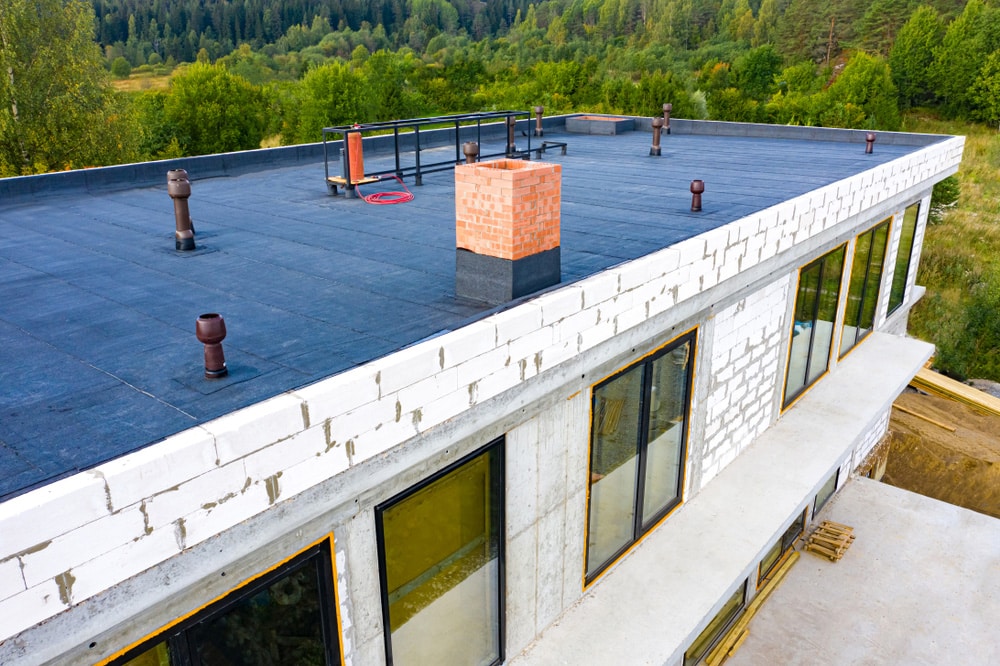Introduction
Flat roof insulation is an essential aspect of modern construction and renovation projects. It plays a crucial role in maintaining energy efficiency, preventing heat loss, and enhancing the overall comfort of a building. This guide will provide an in-depth understanding of flat roof insulation, including its benefits, types, installation methods, and key considerations.
Importance of Flat Roof Insulation
Flat roof insulation is vital for several reasons:
- Energy Efficiency: Proper insulation reduces the amount of heat escaping from a building, leading to lower energy consumption and reduced heating bills.
- Comfort: Insulation helps maintain a consistent indoor temperature, ensuring a comfortable living or working environment.
- Moisture Control: It prevents condensation, which can lead to mold growth and structural damage.
- Environmental Impact: By reducing energy consumption, insulation contributes to lower carbon emissions, benefiting the environment.
Types of Flat Roof Insulation
There are various types of insulation materials suitable for flat roofs, each with its own advantages and disadvantages:
Rigid Foam Insulation
Rigid foam insulation boards, such as polyisocyanurate (PIR) and extruded polystyrene (XPS), are commonly used for flat roofs. They offer excellent thermal resistance, are lightweight, and easy to install. PIR boards are known for their high R-value per inch, making them a popular choice for maximizing insulation in limited spaces.
Spray Foam Insulation
Spray foam insulation provides a seamless and airtight barrier, making it highly effective in preventing heat loss. It can be applied directly to the roof surface, filling gaps and cracks. However, professional installation is required, and it can be more expensive than other insulation types.
Mineral Wool Insulation
Mineral wool insulation, made from natural or recycled materials, is fire-resistant and provides good thermal performance. It is available in batts or rigid boards and is often used in conjunction with other insulation materials for enhanced performance.
Expanded Polystyrene (EPS) Insulation
EPS is a cost-effective and lightweight insulation option. It has a lower R-value compared to PIR and XPS but is still effective in reducing heat loss. EPS boards are easy to handle and can be cut to fit any shape or size.
Installation Methods
The installation method for flat roof insulation depends on the type of roof and the chosen insulation material. Here are the common methods:
Warm Roof
In a warm roof system, the insulation is placed above the roof deck and beneath the waterproof membrane. This method keeps the entire roof structure warm, reducing the risk of condensation. Warm roofs are suitable for both new builds and retrofits.
Cold Roof
In a cold roof system, the insulation is installed between the roof joists, below the roof deck. This method leaves the roof deck cold, which can lead to condensation issues if not properly ventilated. Cold roofs are less common and typically used in specific scenarios where warm roofs are not feasible.
Inverted Roof
An inverted roof, also known as a protected membrane roof, has the insulation placed above the waterproof membrane. This method protects the membrane from temperature fluctuations and UV exposure, extending its lifespan. Inverted roofs are commonly used for roofs that will be walked on, such as terraces and balconies.
Key Considerations
When planning and installing flat roof insulation, several factors should be taken into account:
Building Regulations
Ensure compliance with local building regulations and standards. Regulations often specify minimum R-values and installation requirements to ensure adequate insulation and energy efficiency.
Roof Load Capacity
Consider the load-bearing capacity of the roof structure. Some insulation materials, such as EPS and mineral wool, are lighter than others, making them suitable for roofs with limited load capacity.
Weatherproofing
Proper weatherproofing is crucial to protect the insulation and the building. Ensure that the waterproof membrane is installed correctly and that all seams and joints are sealed.
Ventilation
Adequate ventilation is essential, especially for cold roof systems. Poor ventilation can lead to moisture buildup and condensation, compromising the effectiveness of the insulation and causing damage to the roof structure.
Thermal Bridging
Minimize thermal bridging, which occurs when heat bypasses the insulation through conductive materials. Use thermal breaks and ensure that insulation is continuous and covers all areas of the roof.
Benefits of Professional Installation
While DIY installation of flat roof insulation is possible, hiring a professional can ensure the best results. Professionals have the expertise to choose the right materials, install them correctly, and address any potential issues. They can also provide warranties and guarantees for their work, offering peace of mind to homeowners and building owners.
Maintenance and Inspection
Regular maintenance and inspection are vital to ensure the longevity and effectiveness of flat roof insulation. Periodically check for signs of damage, such as leaks, cracks, or dampness. Promptly address any issues to prevent further damage and maintain the insulation's performance.
Conclusion
Flat roof insulation is a critical component of energy-efficient and comfortable buildings. By understanding the different types of insulation, installation methods, and key considerations, you can make informed decisions to achieve optimal results. Whether you choose rigid foam, spray foam, mineral wool, or EPS insulation, proper installation and maintenance will ensure that your flat roof remains effective in reducing heat loss, controlling moisture, and enhancing overall building performance. Investing in quality insulation not only benefits your comfort and energy bills but also contributes to a more sustainable and environmentally friendly future.





Comments